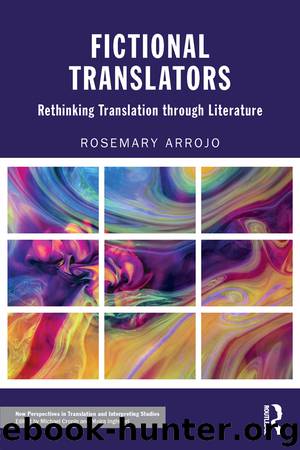Fictional Translators by Arrojo Rosemary

Author:Arrojo, Rosemary
Language: eng
Format: epub
ISBN: 9781317574576
Publisher: Taylor & Francis Ltd
Kafka’s tormented architect of the labyrinth/text
Among the architectural metaphors to be found in Nietzsche’s work, the one that relates the labyrinth to textuality and interpretation is notably effective in suggesting the perpetual proliferation of meaning that constitutes us and all that we claim to know in the world as text. As has been observed, the labyrinth is both “a basic Nietzschean image for the structure of the text” and “an allegory of his conception of textual interpretation” (Schrift 1990: 196), in which “text” and “textual interpretation” are identified with Nietzsche’s basic notion of “becoming,” or “the affirmation of becoming” (Deleuze 2006: 188, trans. Tomlinson), rather than the stability that could be associated with a permanent, pre-existing Ariadne’s thread to which we could safely resort. In Ecce Homo, for example, Nietzsche refers to Thus Spoke Zarathustra as a “labyrinth of fearless knowledge,” whose “perfect reader” should be “a monster of courage and curiosity, […] cunning, cautious, a born adventurer and discoverer” (Nietzsche 2007: 40, trans. Large), that is, someone who is not passively looking for the text’s or its author’s hidden message, but ready to take on the challenge of exercising his or her own will to master the labyrinth. In order to further explore the metaphor of the labyrinth, especially in connection with the relationships that are usually established between writing and interpreting as expressions of the will to power, I invite the reader to join me on a visit to “The Burrow,” a haunting, unfinished story by Kafka (Kafka 1971). Originally entitled “Der Bau” (“The Construction”), the story will be read as a poignant meditation on some of the consequences associated with conceptions of language and text that can be associated with Nietzsche’s thought, with emphasis on the creator’s desire to build an artifact that could be protected from difference as represented, for instance, by the potentially shattering interference of an intruder.
As the story opens, we learn from its narrator/builder, presumably an animal that lives underground, that he has “completed the construction of [his] burrow and it seems to be successful” (ibid.: 325). What follows, however, is a detailed, agonizing account of the builder’s own recurring doubts regarding the actual completion of his work and his painful obsession to create a totally flawless structure, an object that could be absolutely protected from invasion and deconstruction. The basic paradox within which Kafka’s narrator finds himself is thus presented from the outset: the allegedly finished construction that should shelter and protect its architect is also a hole, a burrow. Instead of success and joy, it brings failure and frustration; instead of a definite solution, it brings an indecipherable problem; instead of illumination, it brings darkness; instead of security, it brings fear and anxiety. In brief, “the construction is already a deconstruction to the same extent that it has been constructed” (Sussman 1979: 149). The burrow, like a text, has “passages” that have to be constantly reviewed because of the “manifold possibilities” of their uncontrollable “ramifications” (Kafka 1971: 329): “I begin with
Download
This site does not store any files on its server. We only index and link to content provided by other sites. Please contact the content providers to delete copyright contents if any and email us, we'll remove relevant links or contents immediately.
Cecilia; Or, Memoirs of an Heiress — Volume 1 by Fanny Burney(32434)
Cecilia; Or, Memoirs of an Heiress — Volume 2 by Fanny Burney(31868)
Cecilia; Or, Memoirs of an Heiress — Volume 3 by Fanny Burney(31852)
The Lost Art of Listening by Michael P. Nichols(7403)
Asking the Right Questions: A Guide to Critical Thinking by M. Neil Browne & Stuart M. Keeley(5631)
We Need to Talk by Celeste Headlee(5542)
On Writing A Memoir of the Craft by Stephen King(4863)
Dialogue by Robert McKee(4321)
Pre-Suasion: A Revolutionary Way to Influence and Persuade by Robert Cialdini(4144)
I Have Something to Say: Mastering the Art of Public Speaking in an Age of Disconnection by John Bowe(3839)
Elements of Style 2017 by Richard De A'Morelli(3306)
The Book of Human Emotions by Tiffany Watt Smith(3237)
Fluent Forever: How to Learn Any Language Fast and Never Forget It by Gabriel Wyner(3025)
Name Book, The: Over 10,000 Names--Their Meanings, Origins, and Spiritual Significance by Astoria Dorothy(2938)
Good Humor, Bad Taste: A Sociology of the Joke by Kuipers Giselinde(2903)
Why I Write by George Orwell(2874)
The Art Of Deception by Kevin Mitnick(2735)
The Grammaring Guide to English Grammar with Exercises by Péter Simon(2706)
Ancient Worlds by Michael Scott(2622)
